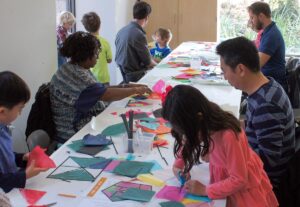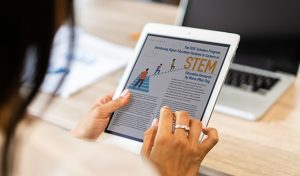

Family Voices: Learning from Families with Preschool-Age Children from Historically Marginalized Communities to Expand our Vision of Engineering
In this study, we worked to elevate the voices of parents and young children from low-income Spanish- and English-speaking families in our community and better understand the ways that they connect with engineering.

“I can do data for my people”: experiences of giving back for Native undergraduates in computing
This paper focuses on the undergraduate experiences in computer sciences (CS) disciplines of eight Native women and two-spirit undergraduates and how their values and experiences around the communal goal of giving back enable them to persist in computing.


“That’s just something I was playing with.” Math talk and avoidance in an art museum.
Findings of a project that brought art and math together in the context of an art museum for intergenerational families lead by custodial grandparents


